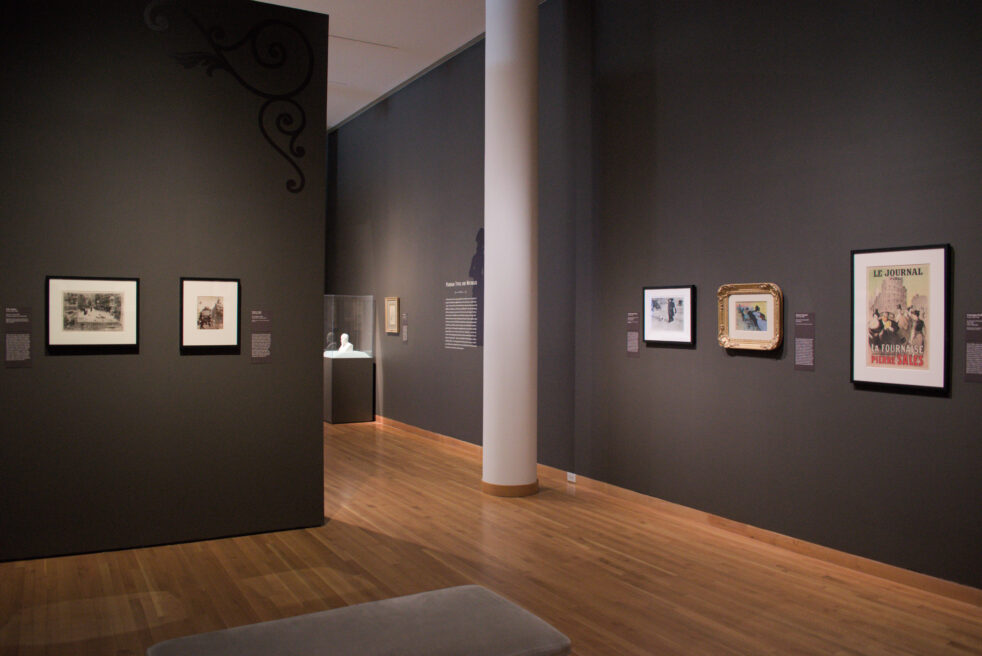On Sept. 1, the High Museum of Art unveiled their newest exhibition: “In the City of Light: Paris, 1850-1920.” The exhibit takes 20 to 45 minutes to walk through and will be open until Dec. 31. With art from painter Edgar Degas and photographer Eugène Atget, the exhibit depicts the luxuries, conflicts, beauty and hardships that Parisians faced during Paris’ “Belle Époque,” or beautiful era.
The popular perception of Paris during this time being all glitz and glamor is incomplete, leaving out the large working-class population that made the era possible hidden away from public view. Through the many rooms of the exhibit, visitors can immerse themselves in the culture, politics, art and history that made the area famous and shaped the culture of today.
The first section of the exhibit is an introduction to the city, showcasing the architecture that Paris is known for and the transformation the city underwent during widespread renovations at the beginning of the 1850s. Sketches and magazine covers depict the extravagant Notre Dame and the more modern Basilica of Sacré-Cœur. The many bridges, parks and avenues where wealthy Parisians went to see and be seen and the small streets and alleys where the working-class lived and worked are also pictured.
The drawings of the lavish parties and balls that the city’s aristocrats frequented are in stark contrast with the dilapidated tenements and poor working conditions that the lower classes were subjected to. The art comments on the increased social stratification that resulted from the renovation of Paris and the polished face that the city put forward to the world.
In the following room, the exhibit shows Paris streets and buildings filled with people, wealthy and working-class alike, taking public transportation and bustling through town for business, work or pleasure. Art depicts interactions between the different sides of the city, commenting on the impact of this new Paris on the quality of life of its citizens and the political climate around workers’ rights.
The third portion of the exhibit explores the “types” of Parisians that could be spotted in town. From famous authors and politicians to errand girls and beggars, the streets of Paris were full of life. The niches and archetypes that are represented in this section paint a more detailed picture of the dynamics present between Parisians of the time and how these exaggerated character types have influenced modern interpretations of femininity and the working class.
In the fourth and final room, visitors get a glimpse into how Parisians spent their free time: attending a show at the newly established Paris Opéra, drinking vibrantly green absinthe in a local bar, watching a café concert or going to the circus. Parisians of all sorts came together to appreciate art and elevate artists as celebrities.
The culture and art that Paris is revered for were exploding in popularity and accessibility, and the citizens of the city were taking part in shaping that art. This section’s paintings and sketches show not only the performers but the audiences as well — the joy and amazement evident on each of their faces as they watch the most stylish of performances.
This new exhibit gives visitors insight into the day-to-day lives of Parisians and contextualizes the environment that gave rise to the art and iconography that Paris is so famous for.
Unlike all of the ostentation of the art, technology and bourgeois of Paris in the “Belle Époque,” the lives of working-class Parisians are not often depicted in popular culture, despite their labor and influence on the city.
The exhibit draws interesting parallels between Paris hundreds of years ago and the world today. Gentrification, striking workers, novel forms of both high and low brow entertainment, the desire to see and be seen and technological advancements are all topics prevalent in today’s society that were being played out all the way back in the late 1800s.
